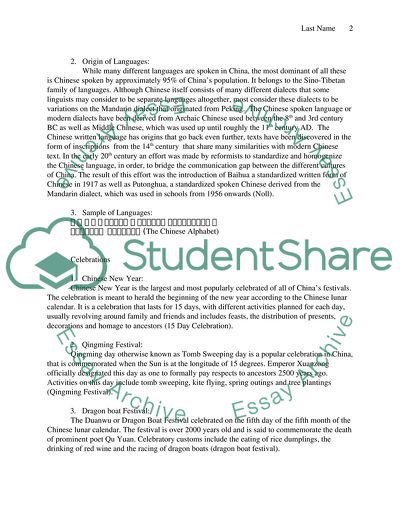Cite this document
(Chinese Customs, Superstitions and Traditions Case Study Example | Topics and Well Written Essays - 2000 words, n.d.)
Chinese Customs, Superstitions and Traditions Case Study Example | Topics and Well Written Essays - 2000 words. https://studentshare.org/culture/1761510-multicultural-fact-sheet-aka-research-paper
Chinese Customs, Superstitions and Traditions Case Study Example | Topics and Well Written Essays - 2000 words. https://studentshare.org/culture/1761510-multicultural-fact-sheet-aka-research-paper
(Chinese Customs, Superstitions and Traditions Case Study Example | Topics and Well Written Essays - 2000 Words)
Chinese Customs, Superstitions and Traditions Case Study Example | Topics and Well Written Essays - 2000 Words. https://studentshare.org/culture/1761510-multicultural-fact-sheet-aka-research-paper.
Chinese Customs, Superstitions and Traditions Case Study Example | Topics and Well Written Essays - 2000 Words. https://studentshare.org/culture/1761510-multicultural-fact-sheet-aka-research-paper.
“Chinese Customs, Superstitions and Traditions Case Study Example | Topics and Well Written Essays - 2000 Words”. https://studentshare.org/culture/1761510-multicultural-fact-sheet-aka-research-paper.


